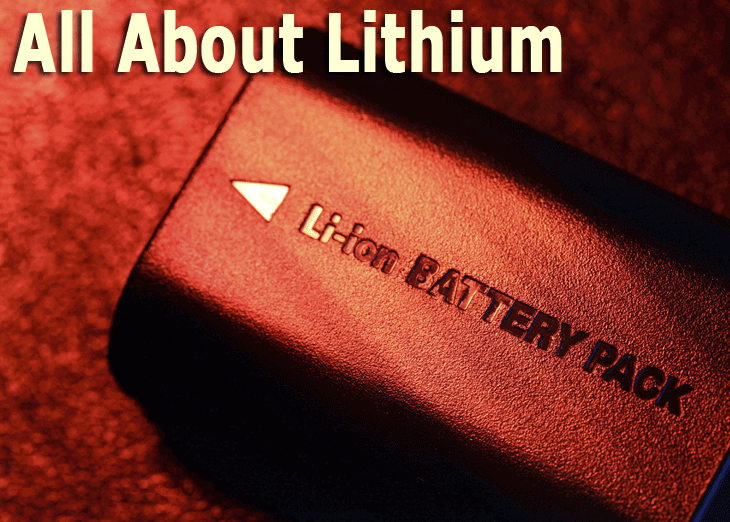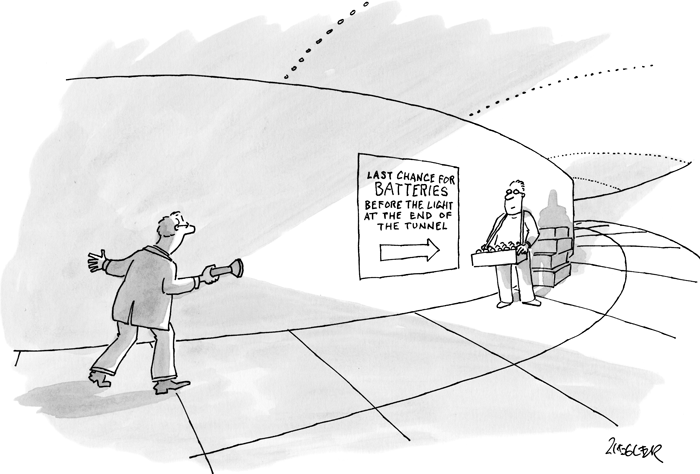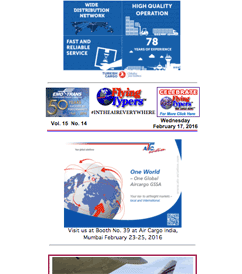
The
Final Frontier
Lithium-batteries,
the final frontier. These are the voyages of
disillusioned and frustrated dangerous goods-cum-hazmat
experts in their seven year mission: To make some
sense of notorious packing instructions 965 to 970
covering Lithium batteries, to seek their true meaning
and a way to explain the regulatory requirements applicable
to the shipping of Lithium batteries by air to those
involved in the transport chain, and boldly go where
no hazmat staff has ever gone before.
If the aforementioned
sentence sounds familiar to you, then you are probably
a Trekkie who has followed the space adventures of
the iconic Captain James T. Kirk and his science officer
Spock.
It may be worthwhile
to remember the power source in Star Trek that made
Warp speed possible: the both volatile and powerful
Dilithium Crystals.
That is actually what
this article is about. It is an analysis of the recent
changes in the Packing Instructions (short PIs) 965
to 970, and their shortcomings, with a brief look
at their history.
A
brief history
Until 2008, Lithium
batteries (and that classification covered both Lithium-Metal
(non-rechargeable) and Lithium-Ion (including Lithium
Polymer; rechargeable batteries) were regulated by
ICAO/IATA Special Provision A 45. Those 44 columned
lines regulated when these batteries could be shipped
as exempted, so that no further requirements of the
regulations applied, or when they had to be declared
as a hazardous material.
That changed with the
2009-2010 edition of the ICAO TI and the 50th edition
of the IATA DGR going into force on January 1st, 2009.
Numerous new special provisions (short SPs) applicable
to Lithium batteries were introduced and the Lithium
batteries as such were split into UN 3090, covering
Lithium metal batteries as such (PI 968), UN 3091
covering Lithium metal batteries either packed with
(PI 969) or installed in equipment (PI 970), UN 3480,
covering Lithium ion batteries as such (PI 965), and
UN 3481 covering Lithium ion batteries either packed
with (PI 966) or installed in equipment (PI 967).
The packing instructions
965 to 970 were divided into two parts each; part
1 regulated the so-called small batteries and cells
(< 1g Lithium per cell or < 2g
Lithium per battery for Lithium metals cells and batteries, < 20 Wh capacity for Lithium ion cells,
and < 100 Wh capacity for Lithium ion batteries).
That was understandable
and trainable, although the fact that shippers of
part 1 batteries (the excepted type) were exempt from
the formal training requirements as well as a number
of other requirements already raised a number of eyebrows
within the industry.
The 51st edition of
the IATA DGR, however, saw the parts in PI 965 to
970 reversed, e.g. the small, excepted batteries were
now addressed in section II of the respective PI and
the fully regulated, larger batteries (which are subject
to all regulatory requirements) in section I.
The 54th Edition of
the IATA DGR for 2013 introduced another ominous change,
as only PIs 965 and 968— applicable to the transport
of batteries as such—saw a further division
of section I into IA and IB:
Section IA continued
to apply to the transport of fully regulated batteries
and section IB applied to small, excepted batteries,
which exceeded the quantity limitations of part II.
They were still excepted from most of the regulatory
requirements, including the requirement for a formal
transport document, the “IATA Shipper’s
Declaration for Dangerous Goods.” With this,
these smaller batteries—although still of the
small excepted type—did not fall under section
II anymore and thus were subject to the formal hazmat
training requirements.
That cells and batteries
in sections IA, I, and II had a net mass limitation,
but section IB batteries had a gross mass limitation,
was something no one really dared to comprehend, least
of all explain to a layman.
As a multitude of airlines
felt unhappy with the exemption of part IB batteries
(which had to be labeled with both the hazard label
for class 9 miscellaneous dangerous goods and the
handling label for excepted Lithium batteries) from
the need for a formal shipping paper, the 55th edition
of the DGR subjected the “IB” batteries
to the DGD requirement.
It is most noteworthy
that regulatory guidance applicable to these commodities
differed greatly; until 2010, the German Federal Institute
for Materials Research (BAM) voiced the opinion that
Shippers of any battery required the full test report
in accordance with part III, subsection 38.3 of the
UN Manual of Tests and Criteria, an opinion which
was later abandoned in lieu of a so-called manufacturer-issued
“certificate of conformity” being sufficient.
Despite vociferous
defenses from the industry associations PRBA and NEMA,
who were speaking for the battery manufacturers and
claimed that incidents, fires, and fatal hull losses
were the result of a few willfully non-compliant shippers,
and that no issues per se implicated Lithium batteries
as a specific problem in air transport, the 56th edition
of the IATA DGR saw Lithium metal batteries transported
as such banned aboard passenger carrying aircraft.
It should be emphasized that shippers of small batteries
were still not subject to formal training requirements
although they had to indicate on the shipping documents
that transport had to be made on “Cargo Aircraft
Only” and that the requirement for a metal outer
or intermediate packaging component (which applied
only to Lithium metal batteries shipped on passenger
aircraft) was abandoned, which eventually reduced
safety. In any case, that requirement was not complied
with by a majority of shippers (at least in a formal
sense), as any packaging component mandated by the
regulations for a packaging specified therein would
have to appear in the so-called UN specification packaging
test report.
In early 2015, ICCAIA,
the industry association speaking for the aircraft
manufacturers, teamed up with the pilot’s association
IFALPA and petitioned the ICAO DGP to introduce stricter
regulations regarding the transport of Lithium batteries,
including banning the transport of Lithium ion batteries
aboard passenger aircraft.
After controversial
deliberations, the proposal was rejected in early
November 2015 with the backing of PRBA, IATA, the
UK, and Germany against the representatives of the
U.S., China, Russia, and Brazil. Instead, a requirement
going into force April 1st was introduced to limit
the SoC (state of charge) for Lithium Ion batteries
only when shipped as such to 30 percent of their maximum
rated capacity.
However, this ICAO
DGP decision did not go over well with the aircraft
manufacturers, pilots, and U.S. representatives from
DOT-PHMSA and FAA, as they felt that safety had been
compromised. Subsequently, the ICAO Air Navigation
Commission (ANC)—where the supporters of tighter
regulations have a majority—has recommended
that this decision be overturned. On February 22,
2016 that is exactly what happened. An interim ban
is to go into effect April 1, 2016. (see item above).
A good overview of
the (U.S.) regulatory requirements can be found in a
presentation worked out by Bob Richards, SVP of
compliance specialist Labelmaster and former PHMSA
Associate Administrator, as well as the published
PHMSA guidance.
What
exactly is at stake right now?
There are three notable
facts about the 1st Addendum for the 57th Edition
of the IATA Dangerous Goods Regulations:
- The number of variations filed
by carriers pertaining to the transport of Lithium
batteries in any form is rapidly increasing. Interestingly,
the carriers to file such variations account for
as much as 55 percent of the overall cargo capacity
of the IATA members, which simply means further
industry fragmentation.
- The changes introduced with
this addendum have turned PIs 965 to 970 into
“incomprehensive gibberish,” as an
Asian governmental hazmat inspector noted. Also
the format and provisions employ a structure that
defies IATA’s self-proclaimed title as the
the “field manual of the industry,”
and trainers struggle to explain the new and amended
provision in a way understandable to personnel
subject to the hazmat training requirements for
the air mode.
- The new provisions contained
in the DGR’s 57th ed. 1st addendum are formally
faulty and will actually require regulatory guidance
to be workable. This issue will be explained later
in this article.
Clear
language
While traditionally
the IATA DGR has fostered a much clearer structure
aiding understanding and implementation of a rather
complex set of regulations, that sadly seems to be
no longer true.
ICAO is ultimately
responsible for a poorly worded and thus hardly workable
part of the regulations.
Besides numerous new
and amended operator variations either further restricting
or altogether banning the transport of Lithium batteries,
the 1st Addendum for the 57th edition of the IATA
DGR will mandate a maximum SoC of 30 percent applicable
to all Lithium Ion and Lithium polymer batteries shipped
as such (UN 3480), but not when contained in or packed with equipment (UN 3481):
“Lithium
ion cells and batteries must be offered for transport
at a state of charge (SoC) not exceeding 30 percent
of their rated design capacity. Cells and/or batteries
at a SoC of greater than 30 percent may only be shipped
with the approval of the State of Origin and the State
of the Operator under the written conditions established
by those authorities. Note: Guidance and methodology
for determining the rated capacity can be found in
Section 38.3.2.3 of the UN Manual of Tests and Criteria,
5th revised edition, Amend. 1.”
Besides other considerations,
at least one would expect that a workable “Field
manual,” which the IATA DGR is dubbed to be,
would contain all the requirements without forcing
the shipper to consult external sources such as the
UN manual of Tests and Criteria.
Although the requirement
for UN 3480 being shipped at a SoC of no more than
30 percent appears to be clear, that will depend on
ambient temperature and some other factors, as PRBA
and NEMA have correctly noted.
The ICAO TI and IATA
DGR mandate that the “rated capacity”
be determined in accordance with subsection 38.3.2.3
of the UN MTC 5th Ed 1st rev. However, subsection
28.3.2.3 does NOT give any procedure, but simply incorporates
by reference three IEC standards. While IEC 62133
(the 2nd) is not applicable, one must choose either
IEC 61960 (the 1st one) or IEC 62660 (the 3rd one)
depending on whether the battery is a power source
for a “road vehicle” or some other type
of battery.
While a majority of
batteries will therefore fall under IEC 61960 and
the 30 percent SoC requirement is not yet in force,
the referenced 1st version of the IEC 61960 has been
retracted and superseded by its 2nd edition, which
allows for an accelerated test procedure. The fact
that the IEC standards are available for pay-only
standards must be applied as referenced.
Whether the accelerated
test procedure permitted in the 2011 version of IEC
61960 is actually permitted is subject to further
regulatory guidance.
It should be noted
that the referenced IEC standards are not mandated
but “guidance” only, but this leaves more
questions open.
 |
Another issue for the
hazmat expert is the term “road vehicle”—would
a hover board qualify as a vehicle?
Most legal systems
contain some form of obligation that a government
must make available applicable legislation to the
citizens and other affected stakeholders. A requirement
to purchase the IATA DGR at a price in excess of U.S.
$300 plus the IEC standard at 90 CHF may not hold
up in a court of law.
Even the referenced
capacity limits for so-called “excepted,”
thus small, Lithium ion batteries are not all that
clear.
Typically in such a
scenario within the IATA DGR, the most restrictive
requirement must be applied, which means that most
people understand Table 965 II in a way that a battery
may not exceed 100 Wh (which is true) and that the
individual cells contained therein may not exceed
20 Wh (which is untrue). A battery consisting of four
cells having 25 Wh each totaling 100 Wh is still considered
“small” and thus not subject to other
requirements than those specifically listed in Section
II.
Cells transported as
such must, however, not exceed 20 Wh.
The DGR 57th 1st addendum
also introduces a limitation on how many packages
of Lithium batteries may be contained within one so-called
“overpack.” It is important to understand
that packagings are mandated by the regulations while
overpacks are added by the shipper for the ease or
convenience of handling and are typically not mandated
by the regulations.
The following sentence
was added to both PI 965 and 968 (applicable to batteries
transported as such only):
“Note:
For the purpose of Section II, an overpack is an enclosure
used by a single shipper that contains no more than
one package prepared in accordance with this section.
Shipments prepared in accordance with Section IA and/or
IB, this limit of one package of Section II batteries
per overpack still applies.”
Because the PIs 965
to 970 in their uppermost part clearly spell out which
part is applicable to which type—capacity and
number of batteries—users of the regulations
need to check only “common” provisions
and the applicable section (IA, IB, I, or II, as applicable).
However, the aforementioned
note appears at the end of section II, although it
is applicable to both Section IA and IB.
Another longstanding
issue within the PIs 967 and 970, applicable to Lithium
batteries contained in devices, are the provisions
made for so-called “active devices”:
“Devices
such as radio frequency identification (RFID) tags,
watches and temperature loggers, which are not capable
of generating a dangerous evolution of heat, may be
transported when intentionally active. When active,
these devices must meet defined standards for electromagnetic
radiation to ensure that the operation of the device
does not interfere with aircraft systems. The devices
must not be capable of emitting disturbing signals
(such as buzzing alarms, strobe lights, etc.) during
transport.”
Well, what are these
“defined standards?” The regulations don’t
say.
For any transport made
by air to, from, or through Europe, EC Directive 2004/108/EC
must be adhered to while the FAA has similar, although
not identical, standards.
For Europe, the EASA-OPS
parts Cat.Gen.MPA140 and 200 as well as EC-Directive
965/2014 must be complied with. Numerous European
states have a legal requirement that the commander
of an aircraft be informed about the presence of such
an “active device”—which, for example,
may be an innocuous temperature data logger packed
with otherwise unrestricted cargo.
Because these data
loggers typically contain four or less Lithium metal
cells or two or less Lithium metal batteries installed
in equipment, regulatory guidance from IATA suggests
that the following provision in PI 970 would apply:
“Additional
Requirements–Section II: Each package must be
labelled with a lithium battery handling label.
This requirement does
not apply to:
-
packages containing only button
cell batteries installed in equipment (including
circuit boards); and
-
consignments of two packages or
less where each package contains no more than
four cells or two batteries installed in equipment
Where a consignment includes packages bearing the
lithium battery handling label, the words 'Lithium
metal batteries in compliance with Section II of PI
970' must be included on the air waybill, when an
air waybill is used. The information should be shown
in the 'Nature and Quantity of Goods' box of the air
waybill.”
Which, in clear language,
means nothing else than if no more than four small
cells or no more than two small batteries are shipped contained in equipment, the presence of Lithium batteries need
not be declared at all for the purpose of transport.
That this contradicts
applicable European legislation is a fact unbeknownst
to most shippers and forwarders as well as ground
handling agents involved in the handling of such commodities.
 |
The only manufacturer
of such temperature logging devices whose product
documentation sufficiently addresses these various
standards not covered by the industry’s “field
manual” is (also noteworthy) a U.S. manufacturer:
Sensitech, Inc.
The fire aboard a parked
Boeing 787 in Heathrow, which closed LHR down for
almost 90 minutes on July 12th, 2013, was caused by
faulty wiring in the aircrafts’ Emergency Locator
Transmitter (ELT) located near the back of the plane
and outfitted with Lithium metal batteries as a power
source.
Initial reports of
the accident suspected Lithium batteries as source
of the fire, a fact later confirmed by the UK Air
Accidents Investigation Branch (AAIB).
Jens





